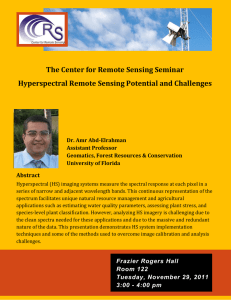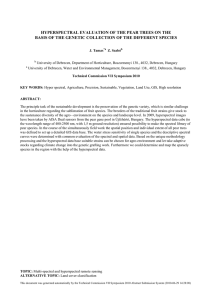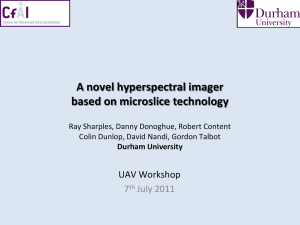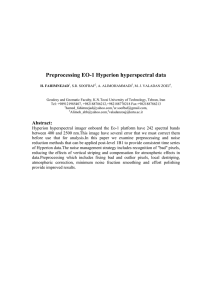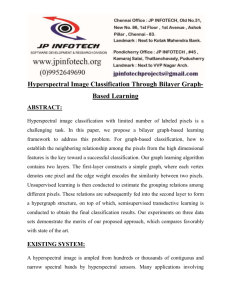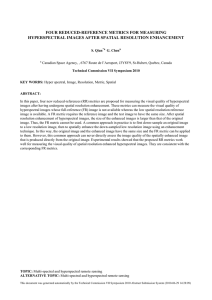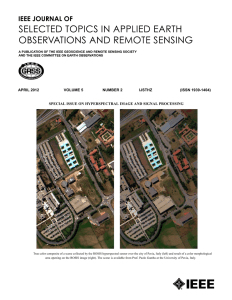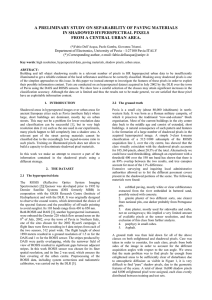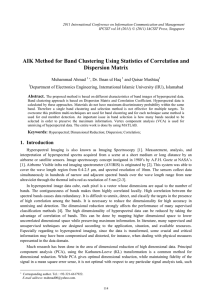SHADOWED FEATURE CLASSIFICATION IN HYPERSPECTRAL IMAGES Author:
advertisement
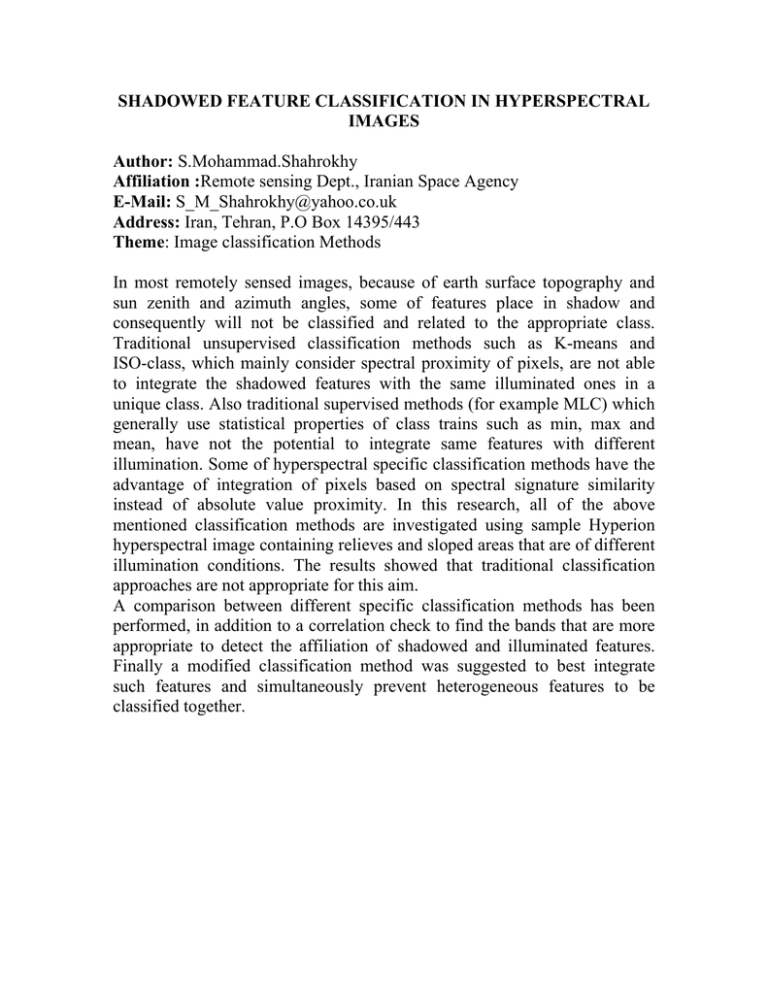
SHADOWED FEATURE CLASSIFICATION IN HYPERSPECTRAL IMAGES Author: S.Mohammad.Shahrokhy Affiliation :Remote sensing Dept., Iranian Space Agency E-Mail: S_M_Shahrokhy@yahoo.co.uk Address: Iran, Tehran, P.O Box 14395/443 Theme: Image classification Methods In most remotely sensed images, because of earth surface topography and sun zenith and azimuth angles, some of features place in shadow and consequently will not be classified and related to the appropriate class. Traditional unsupervised classification methods such as K-means and ISO-class, which mainly consider spectral proximity of pixels, are not able to integrate the shadowed features with the same illuminated ones in a unique class. Also traditional supervised methods (for example MLC) which generally use statistical properties of class trains such as min, max and mean, have not the potential to integrate same features with different illumination. Some of hyperspectral specific classification methods have the advantage of integration of pixels based on spectral signature similarity instead of absolute value proximity. In this research, all of the above mentioned classification methods are investigated using sample Hyperion hyperspectral image containing relieves and sloped areas that are of different illumination conditions. The results showed that traditional classification approaches are not appropriate for this aim. A comparison between different specific classification methods has been performed, in addition to a correlation check to find the bands that are more appropriate to detect the affiliation of shadowed and illuminated features. Finally a modified classification method was suggested to best integrate such features and simultaneously prevent heterogeneous features to be classified together.
